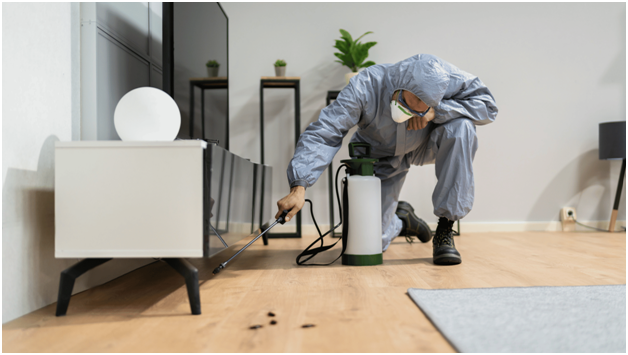
Integrated Pest Management: A Holistic Approach to Pest Control
Pest control is a critical aspect of maintaining a healthy living environment, yet traditional methods often involve chemical treatments that can pose risks to human health, pets, and the ecosystem.
Integrated Pest Management (IPM) offers a more holistic and sustainable approach, combining multiple strategies to effectively manage pest populations while minimizing risks. This comprehensive overview will explain the principles of IPM, its benefits, and how it is implemented in various settings.
What is Integrated Pest Management (IPM)?
Integrated Pest Management is a pest control strategy that incorporates a variety of practices to manage pest populations in an environmentally friendly manner. The goal of IPM is not just to eliminate pests but to manage them in a way that minimizes their impact on human health, the environment, and the economy. This method is proactive, focusing on preventing pest infestations before they occur, rather than simply reacting to them after the fact.
Key Principles of IPM
- Prevention: The first step in IPM is to prevent pests from becoming a problem in the first place. This involves identifying and eliminating factors that attract pests, such as food sources, shelter, and moisture. Homeowners can take preventive measures, such as sealing cracks and crevices, maintaining proper sanitation, and reducing clutter to deter pests.
- Monitoring: Regular monitoring is essential for identifying pest populations and assessing the extent of infestations. This can involve visual inspections, setting traps, or using other monitoring techniques to gather data on pest activity. Understanding the population dynamics of pests helps in making informed decisions about when and how to implement control measures.
- Identification: Accurate identification of pests is crucial in IPM. Different pests require different management strategies, and misidentification can lead to ineffective control measures. By recognizing the specific species and understanding its biology and behavior, homeowners can choose the most appropriate control methods.
- Control Strategies: IPM employs a combination of control methods that may include cultural, mechanical, biological, and chemical techniques:
- Cultural Controls: These methods involve altering the environment to make it less conducive to pests. This can include practices such as crop rotation, proper waste management, and selecting pest-resistant plant varieties in gardens.
- Mechanical Controls: Mechanical methods involve physically removing pests or blocking their entry points. Examples include using traps, barriers, and exclusion techniques to prevent pests from accessing buildings.
- Biological Controls: This approach utilizes natural predators or parasites to manage pest populations. Introducing beneficial insects, such as ladybugs or predatory wasps, can help control harmful pest species without the need for chemicals.
- Chemical Controls: While IPM emphasizes reducing chemical use, there are times when pesticides may be necessary. When used, IPM focuses on selecting targeted, low-toxicity options and applying them in a way that minimizes harm to non-target organisms and the environment.
- Evaluation: The final step in IPM is to evaluate the effectiveness of the implemented strategies. This involves assessing whether the control measures have reduced pest populations and determining if any adjustments are needed. Continuous evaluation ensures that the IPM program remains effective and sustainable over time.
Benefits of Integrated Pest Management
IPM offers numerous advantages compared to traditional pest control methods:
- Environmental Protection: By minimizing the use of harmful chemicals, IPM helps protect beneficial insects, wildlife, and the overall ecosystem. This approach reduces the risk of pesticide runoff contaminating water sources and harming non-target species.
- Health Safety: IPM prioritizes human health by reducing exposure to toxic chemicals. Many traditional pest control methods can pose health risks to humans and pets; IPM aims to limit these risks through careful planning and implementation.
- Cost-Effectiveness: Although the initial investment in IPM strategies may be higher, the long-term savings can be significant. Preventive measures can reduce the likelihood of expensive infestations and the need for frequent pesticide applications.
- Sustainability: IPM fosters a sustainable approach to pest management by promoting biodiversity and encouraging natural pest control methods. This holistic perspective supports long-term pest management solutions without depleting resources or causing environmental harm.
Implementing IPM in Your Home
To implement IPM in your own home, start by conducting a thorough inspection of your property. Identify potential entry points for pests and areas that may attract them. Establish a regular monitoring schedule to keep track of pest activity, and educate yourself on the specific pests that are common in your area.
Consider consulting with a professional pest control service that employs integrated pest management principles. These experts can provide tailored recommendations based on your unique situation and help you develop an effective pest management plan.
Conclusion
Integrated Pest Management represents a shift toward more sustainable, environmentally conscious pest control methods. By combining prevention, monitoring, identification, and a variety of control strategies, IPM offers a holistic approach to managing pests effectively. As awareness of the benefits of IPM grows, homeowners and professionals alike can work together to create healthier living environments free from the negative impacts of pest infestations.

